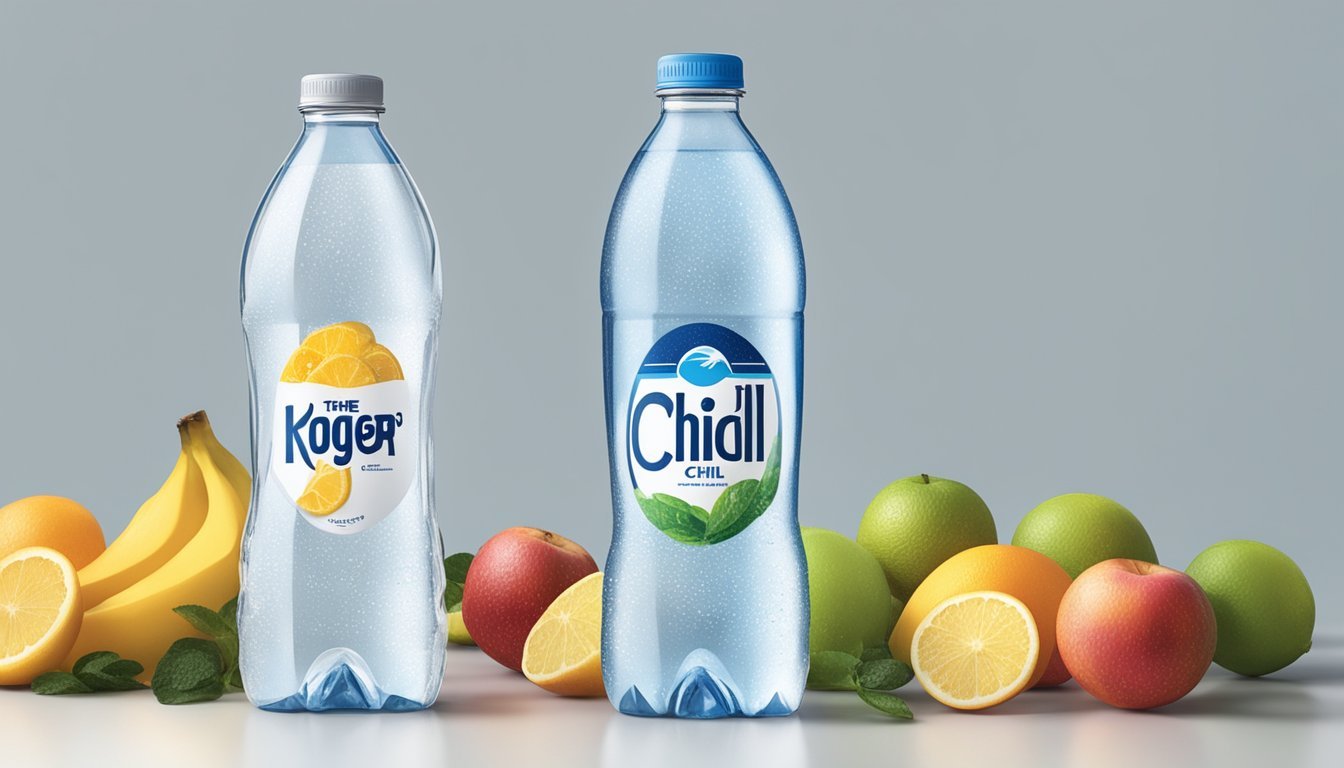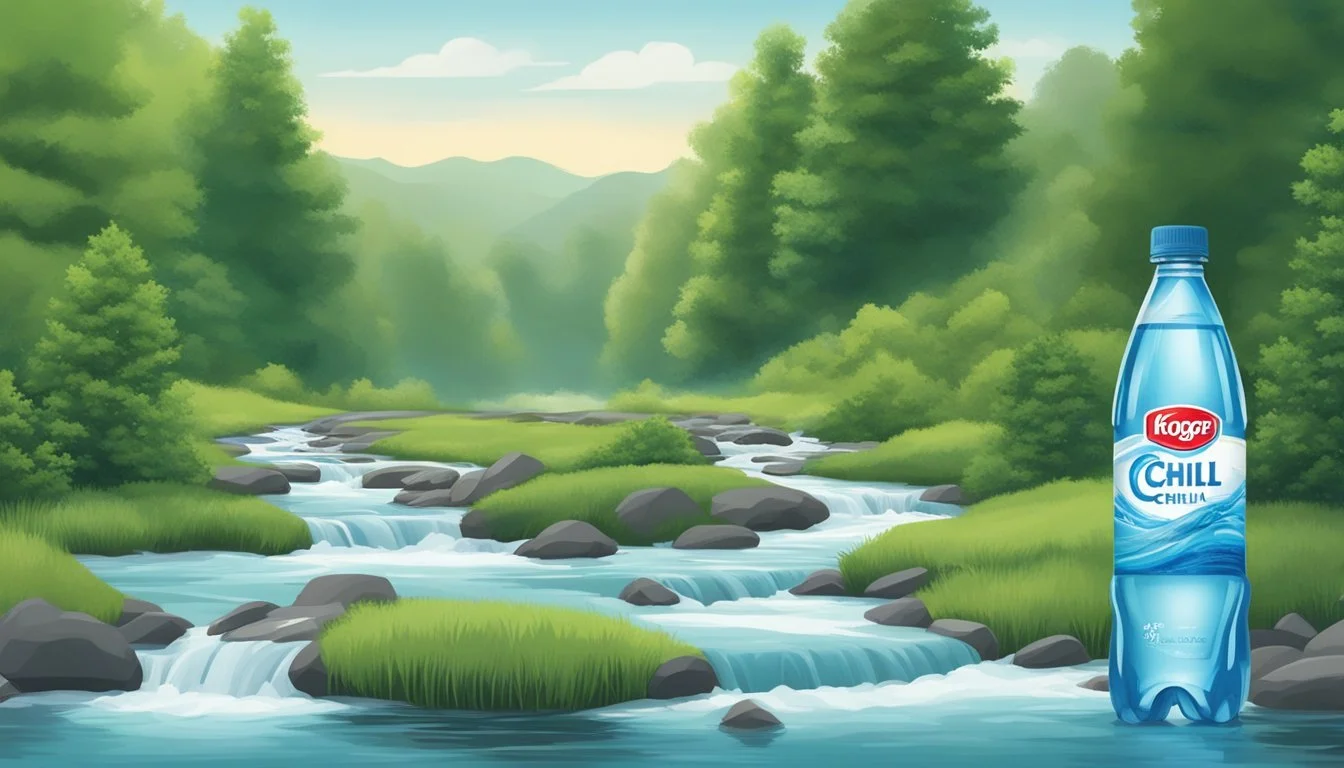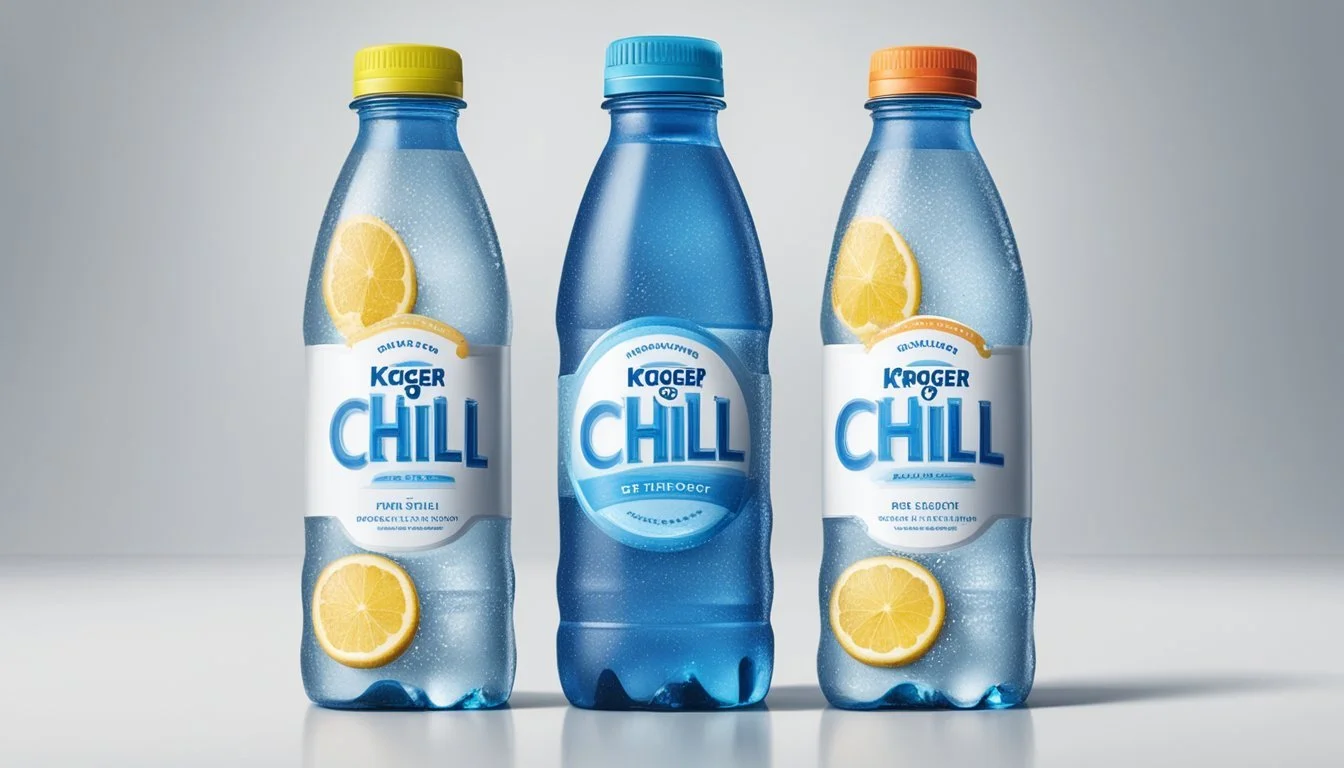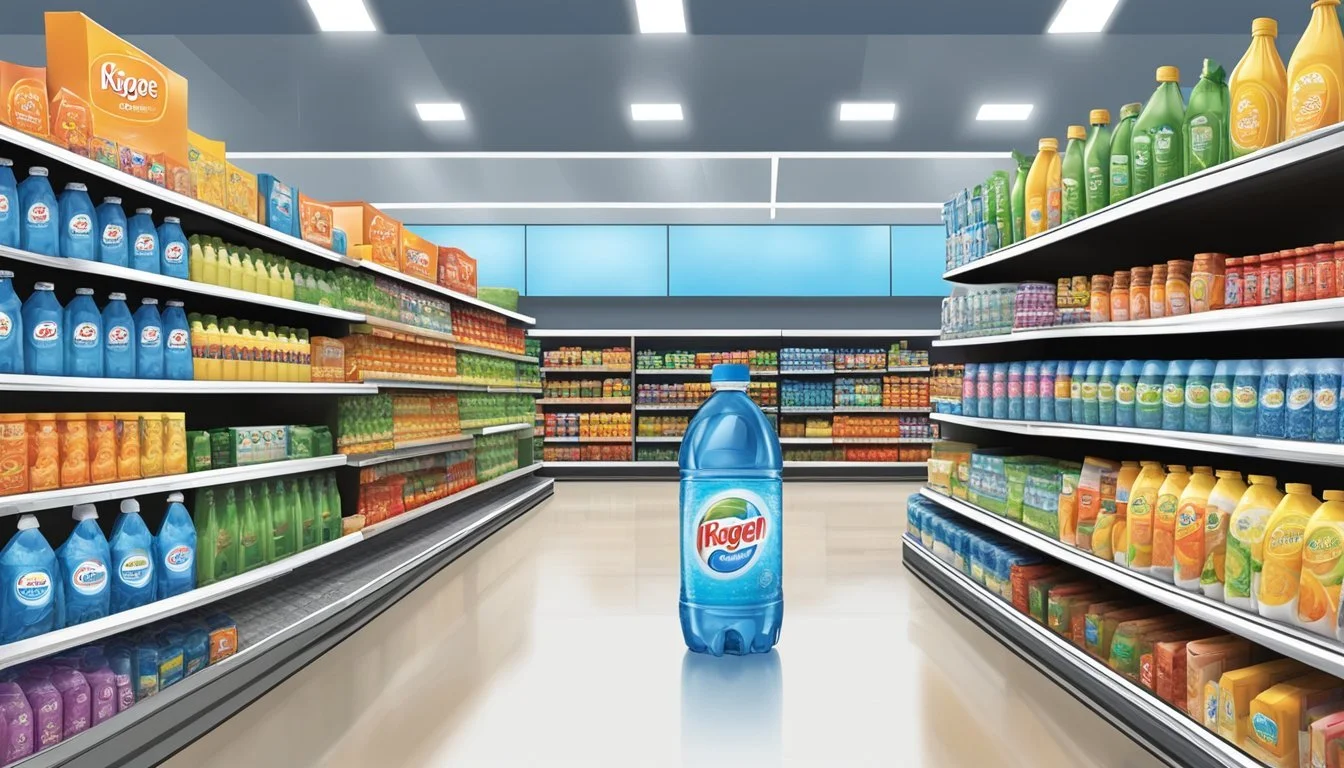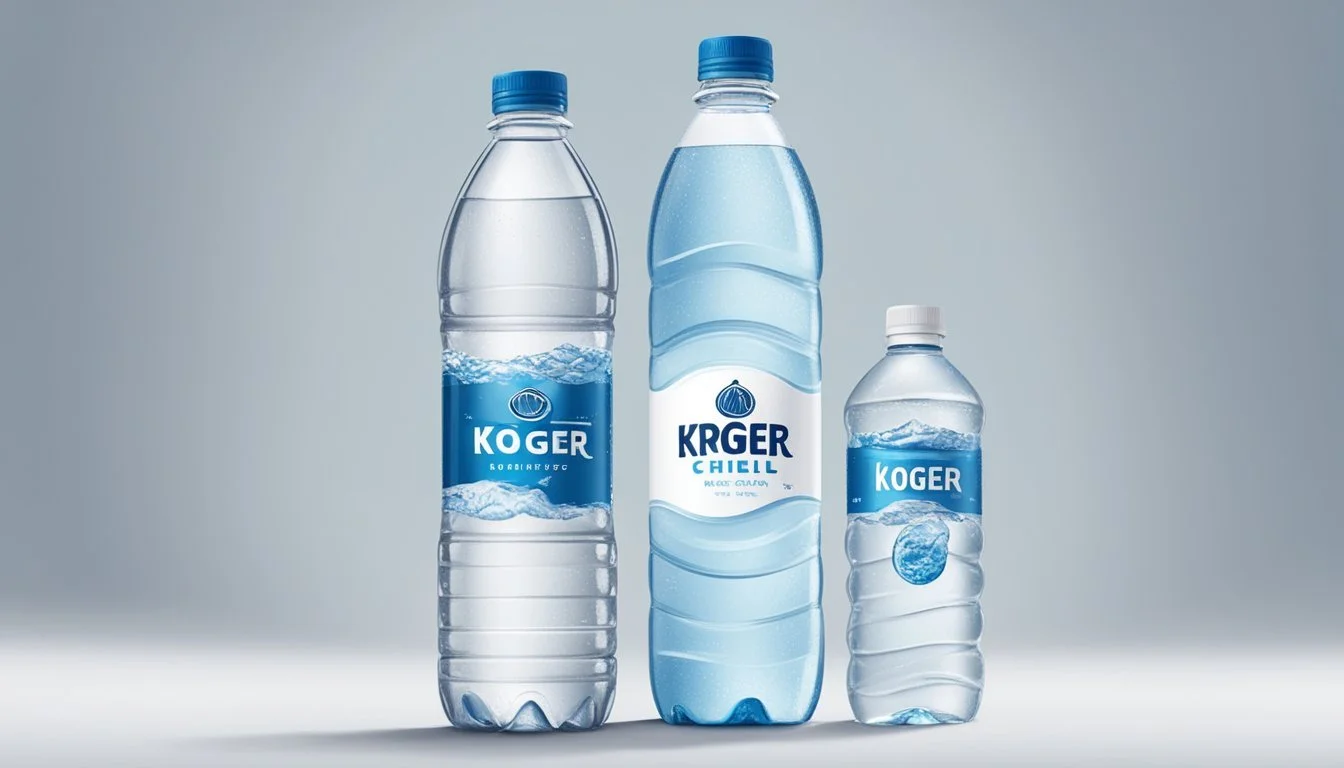Kroger vs. Big Chill
A Comparative Analysis of Bottled Water Quality
Bottled water brands like Kroger and Big Chill often find themselves competing for a spot in our grocery carts. Each brand touts its benefits, but how do they really stack up against each other? Kroger bottled water adheres to FDA regulations, ensuring it meets safety and quality standards, making it a reliable option for those concerned with compliance and safet
Big Chill, on the other hand, is known for its crisp and clean taste, devoid of any plastic tang, giving it a taste profile that many find appealing. Despite this, both brands face scrutiny regarding their environmental impact, particularly due to concerns over plastic waste and potential contaminants like microplastics.
Comparing these two brands involves considering not just taste and safety, but also their environmental footprint. This makes the choice between Kroger and Big Chill a complex decision for the environmentally conscious consumer.
Evaluating Bottled Water Quality
Understanding the quality of bottled water involves examining various factors such as certifications, the source of the water, and its taste profile. Each aspect contributes to determining the overall quality of the product.
Quality Reports and Certifications
Quality reports and certifications provide assurance that bottled water meets specific safety and quality standards. Both Kroger and Big Chill adhere to FDA regulations, which set limits for contaminants and regulate labeling.
Additionally, these brands often undergo third-party testing to verify compliance with standards such as those set by the Environmental Protection Agency (EPA). Many bottles are labeled BPA-free, and some reports have highlighted concerns like the presence of microplastics, although these are typically within acceptable limits.
Water Source Analysis
The source of water is crucial in evaluating quality. Kroger and Big Chill often source their water from municipal supplies, essentially treated tap water. They may also use sources like spring water or mineral water.
Water from natural sources often undergoes processes like reverse osmosis and filtration to remove impurities. This helps in meeting safety standards while maintaining beneficial minerals. The water source can also impact the taste and the level of natural electrolytes present in the product.
Taste Profile Breakdown
Taste is a significant factor when choosing bottled water. Kroger water is often described as clean and neutral, with no lingering plastic taste. Its purification process ensures the removal of off-flavors but can sometimes leave a slightly tangy aftertaste.
Big Chill, on the other hand, is praised for its natural, crisp taste, which some attribute to a higher mineral content. This brand's water tends to have a smoother finish, appealing to those who prefer a more natural tasting experience. Variations can be due to the specific minerals retained from the source or added during processing.
Comparative Analysis of Major Water Brands
The market for bottled water is vast, with a variety of brands offering distinct options. This section focuses on the diversity of these brands and a detailed comparison between Kroger and Big Chill.
Diversity of Brands on the Market
Bottled water is available in many forms, including spring water, alkaline water, and purified water. Major brands include Evian, Voss, Fiji, Dasani, Aquafina, Smartwater, Pure Life, and Poland Spring.
Spring water brands, such as Evian and Poland Spring, often highlight their natural sources. Alkaline waters like Essentia boast higher pH levels, promoting health benefits. Premium brands such as Fiji and Voss offer a blend of taste and aesthetic appeal.
Core Hydration and LIFEWTR provide purified water with added electrolytes. Dasani and Aquafina cater to everyday hydration needs with wide availability and affordability.
Specifics of Kroger and Big Chill Brands
Kroger bottled water is economical, priced at around $1.29 per gallon. It complies with FDA regulations and is mostly BPA-free. Big Chill is another budget-friendly brand, offering similar quality at an accessible price point.
Kroger offers dependable spring water, making it a practical daily choice. Big Chill differentiates itself with clean taste and absence of plasticky aftertaste.
Contaminant concerns like microplastics affect both brands, reflecting a broader industry issue. It's important to consider environmental impacts, given the plastic used in these bottles. Both brands maintain a good balance between affordability and quality, making them popular among budget-conscious consumers.
Health and Environmental Considerations
Kroger and Big Chill bottled waters present different attributes regarding health and environmental effects. This section delves into the impacts of their packaging, the safety of their water, and the presence of beneficial minerals.
Bottles and Environmental Impact
Both Kroger and Big Chill use plastic bottles predominantly, contributing to environmental concerns. Plastic bottles are known for causing pollution and a high amount of waste. Despite some being BPA-free, the non-biodegradable nature of plastic poses a long-term environmental risk.
Microplastics also end up contaminating both water and ecosystems. Consumers seeking more environmentally friendly options might prefer glass bottles, though they are less common. While efforts to reduce plastic usage are ongoing, significant progress is necessary to mitigate their environmental footprint.
Contaminants and Water Safety
Water safety is a crucial issue for consumers. Kroger and Big Chill are mandated to adhere to the Environmental Protection Agency (EPA) regulations to ensure safety. Testing for contaminants like arsenic, heavy metals, and microplastics is essential.
Studies have flagged the presence of microplastics in bottled water, raising health concerns. Additionally, municipal supplies used by some bottled water brands might carry unexpected contaminants like fertilizers and pharmaceuticals. Ensuring that bottled water meets stringent safety standards is critical for consumer protection.
Minerals and Health Benefits
Mineral content in bottled water can add health benefits. Both brands source their water from various places, including groundwater and springs, which may contribute to the mineral composition.
These minerals can include calcium, magnesium, and potassium, which are beneficial for health. It’s essential to note the pH levels as well, as more balanced levels can be more beneficial. Some consumers prefer waters with slightly alkaline pH levels for better taste and potential health benefits. Mineral content should be clearly labeled, aiding consumers in making informed choices.
Consumer Concerns and Preferences
Consumers often prioritize flavor, water taste, and packaging when selecting bottled water. The convenience and cost of the product also play significant roles in their choices.
Flavor and Water Taste Analysis
Flavor and water taste are critical for consumers when choosing between Kroger and Big Chill bottled water. Many prefer water that tastes pure without any plastic or chemical aftertaste.
Kroger bottled water meets FDA regulations, ensuring safety and quality, but some consumers note the presence of a slight aftertaste. Big Chill, on the other hand, is often praised for its clean and crisp taste, comparable to brands like Deer Park and Ice Mountain.
Both brands aim to provide a refreshing taste, but consumer preferences vary based on personal taste experiences. This can make one brand more appealing than the other in different contexts.
Packaging and Convenience
Packaging and the overall convenience of bottled water are equally important. Kroger offers its water in a variety of sizes, from small, single-use bottles to bulk options, catering to diverse needs. The bottles are predominantly BPA-free, aligning with current health trends.
Big Chill also provides multiple packaging options and emphasizes environmentally friendly practices, reducing the use of plastic where feasible. Their bottles are sturdy and designed for on-the-go convenience.
Convenience also extends to availability. Kroger water is readily available in their retail stores, whereas Big Chill can be found in several supermarkets, including outlets that carry Zephyrhills. Pricing competitiveness between the two brands is comparable, allowing consumers flexibility in their purchasing decisions based on their specific needs and preferences.
Innovations and Trends in Bottled Water
Significant innovations in bottled water include the rise of emerging brands and advancements in water filtration and purification technologies.
Emerging Water Brands
The bottled water market has seen an influx of brands with unique selling points. Liquid Death, for instance, markets its product with a distinctive rebellious image, targeting younger consumers.
Waiakea from Hawaii offers volcanic water, which claims to be naturally alkaline and rich in minerals. Flow markets its water as naturally alkaline and eco-friendly with its renewable packaging.
Castle Rock emphasizes its spring water source and sustainability credentials. The popularity of these brands highlights a shift towards premium offerings and distinct experiences.
Advances in Water Filtration and Purification
Modern filtration and purification methods have significantly improved bottled water quality. Alkaline water brands boast enhanced pH levels, believed to offer health benefits.
Advanced purification techniques, such as reverse osmosis and UV filtration, are widely adopted by leading brands like Gatorade for their purified water products.
Efforts to reduce contaminants, including microplastics, are critical in addressing health concerns. High-end bottled waters, promoted by water sommeliers, gain attention for their exceptional purity and mineral compositions. These innovations ensure a competitive edge in the crowded bottled water market.
Economic Perspective
The economic factors include the cost analysis of Kroger and Big Chill water bottles and how they perform in the competitive market against other brands.
Cost Analysis
Kroger bottled water is often considered cost-effective. Available typically at lower prices, it aims at budget-conscious consumers. Prices can range from $0.10 to $0.20 per bottle when bought in bulk. This makes it an attractive choice for large families and individuals looking for affordable hydration options.
Big Chill, a mid-range option, balances cost and quality. Generally priced higher than Kroger, it is aimed at a more quality-conscious consumer base. In stores, Big Chill is often seen at prices around $0.30 to $0.50 per bottle. This positions it between budget brands and premium options like Nestlé Pure Life.
Market and Brand Competition
Kroger and Big Chill compete in a saturated market dominated by major players like Nestlé Waters and Pepsico. Kroger leverages its well-known name and extensive distribution network to reach a broad audience through its own stores. This widespread availability gives Kroger a competitive edge in market penetration.
Big Chill, although less ubiquitous, focuses on niche marketing and quality differentiation. It faces stiff competition from established brands like Nestlé Pure Life, which boasts a strong market presence and consumer trust. Yet, Big Chill's quality standards and mid-range pricing position it as a significant contender in the market, appealing to those seeking a balance between cost and quality.
Conclusion
Kroger and Big Chill offer distinct options for bottled water enthusiasts. Each brand has unique attributes worth considering.
Taste: Big Chill provides a clean, crisp taste with a velvety texture. Kroger offers a slightly tangy finish that some may find off-putting.
Price: Kroger Purified Drinking Water is typically more affordable. Big Chill tends to be priced higher for its perceived premium quality.
Environmental Impact: Both brands face scrutiny over their use of plastic bottles. Kroger's bottles are often BPA-free, addressing some health concerns.
Safety and Quality: Kroger adheres to FDA regulations ensuring safety. Big Chill maintains high standards, often rated favorably in taste tests.
Availability: Kroger's wide distribution network ensures easy access. Big Chill may be less widely available but can be found in select premium stores.
Packaging: Kroger’s packaging is functional but lacks flair. Big Chill’s packaging is modern, appealing, and enhances the product’s premium feel.
Each brand offers something different, allowing consumers to choose based on their preferences and priorities.
More About Kroger
Kroger vs Kirkland Signature: Which Bottled Water is Better?
Kroger vs Richard's Rainwater: Which Bottled Water is Better?
Mountain Valley Spring Water vs Kroger: Which Bottled Water is Better?
Whole Foods Italian Still Mineral water vs Kroger: Which Bottled Water is Better?
More About Big Chill
Big Chill vs Kirkland Signature: Which Bottled Water is Better?
Big Chill vs Talking Rain AQA: Which Bottled Water is Better?
Big Chill vs Whole Foods 365: Which Bottled Water is Better?
Cascade Mountain vs Big Chill: Which Bottled Water is Better?
Hawaii Volcanic vs Big Chill: Which Bottled Water is Better?
Hawaiian Springs vs Big Chill: Which Bottled Water is Better?
Icelandic Glacial vs Big Chill: Which Bottled Water is Better?
Mountain Valley Spring Water vs Big Chill: Which Bottled Water is Better?
Nestle Pure Life vs Big Chill: Which Bottled Water is Better?
Richard's Rainwater vs Big Chill: Which Bottled Water is Better?
Solan de Cabras vs Big Chill: Which Bottled Water is Better?
Whole Foods Italian Still Mineral water vs Big Chill: Which Bottled Water is Better?


